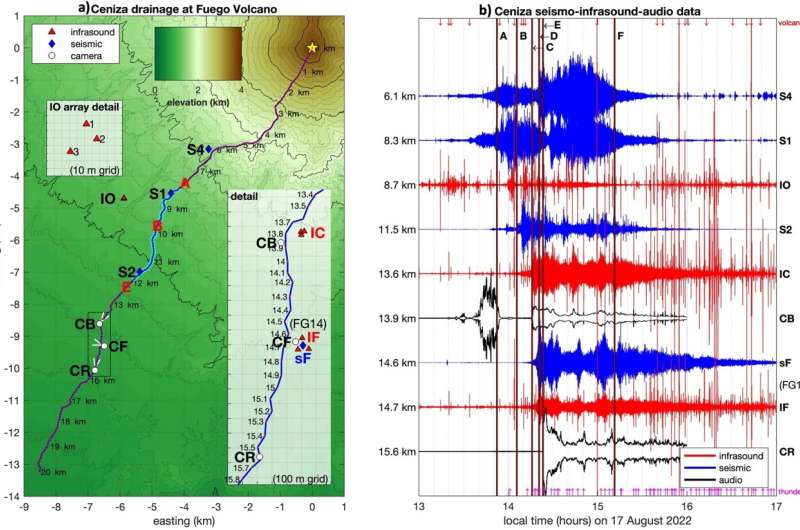This article has been reviewed according to Science X's editorial process and policies. Editors have highlighted the following attributes while ensuring the content's credibility:
fact-checked
peer-reviewed publication
trusted source
proofread
New study detects inaudible sounds of volcanic mudflows

A study published in Scientific Reports shows that catastrophic volcanic mudflows, known as lahars, can be effectively monitored with infrasound remote sensing technology.
Infrasound airwaves are low-frequency sounds below the threshold of human hearing that can propagate long distances. They may be used to detect small mudflows at distances of 5 kilometers or more. The signals can identify approaching mudflows when they are still more than 20 minutes away.
Lahars are the most impactful of volcanic hazards. The 1985 eruption of Nevado del Ruiz in Colombia, for example, killed more than 20,000 people when large lahars reached the flat valleys where the city of Armero was located.
The recent research looked at signals from more than 20 small- to medium-sized lahars that occurred in 2022 at the active Fuego volcano in Guatemala, where regular lahars occur during the country's rainy season.
"This study is exciting because it adds to our arsenal of tools for early warning of volcanic mudflows before they reach and potentially impact downstream communities," said co-author and Boise State geologist Jeffrey Johnson.
"Infrasound signal analysis appears to have special utility to identify the early movement of mudflows high up on a volcano as they begin to flow toward exposed populations. Early warning is key for mitigation of hazards."
The research team was fortunate, said Johnson, to record several lahars and to observe one medium-sized event firsthand.
"Lahars are one of the most common volcanic hazards but still one of the most poorly understood," said Eva Zanzerkia, a program director in NSF's Division of Earth Sciences. "This project demonstrates that developing new infrasound tools can go a long way toward improving our understanding the dynamics of these mudflows and helping us manage the hazards."
More information: J. B. Johnson et al, Infrasound detection of approaching lahars, Scientific Reports (2023). DOI: 10.1038/s41598-023-32109-2
Journal information: Scientific Reports
Provided by National Science Foundation





















